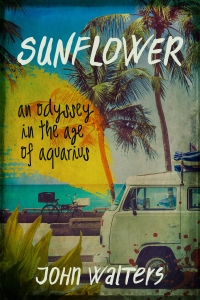The background of the edition of this book and how I came by it is an interesting story. Two of my sons and I went on a road trip from Seattle to the San Francisco Bay Area in late June 2019. One of our stops was the Jack London State Historic Park. In the park’s bookstore ensconced within the museum in the House of Happy Walls, I noticed uniform editions of many of Jack London’s books. The clerk told me that a publisher had suggested creating a new set of London’s books exclusively for sale at the state park. These books are exceedingly attractive, having for the most part the same covers as the original first editions published hot off Jack London’s pen. They are available at the museum, through the state park’s website, and at Amazon.
The museum edition of The Cruise of the Snark was the souvenir I chose to carry away with me from our visit to the park. It’s a nonfiction account of the voyage to Hawaii and then to the South Seas undertaken by London, his wife Charmian, and a small carefully selected crew. The text is accompanied by one hundred twenty illustrations; unfortunately, most of the illustrations are poorly reproduced, and their subjects are barely discernible. Additionally, the text of the book has more than the average share of misprints and errors. Apart from these defects, which do not really diminish from enjoyment of the stories, the book is very entertaining.
When Jack London decided to custom-build a small sailing ship and journey around the world, he contracted with major magazines for articles that he would write along the way. The Cruise of the Snark is a compilation of these articles. Most of the stories I was already familiar with, having read several versions of London’s life story; some of the biographies reproduce his accounts almost verbatim. Still, there were numerous details that became uncovered like hidden gems as I made my way through the book.
When London got the vision to sail around the world, rather than purchase a used vessel, he decided to build his own from scratch. Unfortunately, as he was so busy, he left management of the construction to others, and it was marked by ineptitude, a bloated budget, and endless delays. London wanted the best of everything and spared no expense. In the end, the ship cost several times the initial estimated price, and when London went to claim it, most of the expensive innovations didn’t work. Rather than risk further expense and delay in San Francisco, London accepted the ship in its incomplete state, loaded the crew aboard, and set off for Hawaii to complete its construction. On the way, he had to teach himself to navigate and handle all the petty emergencies that arose due to the shoddy craftsmanship of the original builders.
In Hawaii, while repairs to the Snark were being made, London learned to surf, visited the leper colony on Molokai and wrote one of the first sympathetic accounts of the lives of its residents, and joined an expedition on horseback that forayed deep into the crater of a volcano.
After Hawaii, London, Charmian, and the crew sailed for the Marquesas Islands, the site of Herman Melville’s classic travelogue Typee. Ever since he had read Melville’s account, London had wanted to visit the Marquesas. However, when they arrived, the travelers from the Snark found a wretched population of former cannibals dying out from various tropical diseases. For his account of his visit to Tahiti, London focused on an American he calls “the nature man” who was dying of pneumonia in Oregon, but in Tahiti, eschewing clothing and other trappings of civilized society, he lived a robust, healthy life. In Bora-Bora, London and Charmian were treated, as guests of honor, to endless abundant feasting and revelry. In the Solomon Islands, he and Charmian toured the archipelago with a ship recruiting native labor for plantation work and were in constant danger from cannibalistic headhunters.
Soon after their adventures in the Solomon Islands, London and Charmian, after two years at sea, were forced to abandon their journey. The toll on their health became too great, especially on London’s. He developed an excruciating condition in which his hands grew to twice their normal size and continually pealed multiple layers of skin. He had no choice but to return to California to recover.
I tried to do a quick online search to see what had happened to Jack London’s Snark after he was forced to abandon it. Most accounts say that it was sold in Australia for much less than it cost to build, but after that, its fate remains a mystery.
































